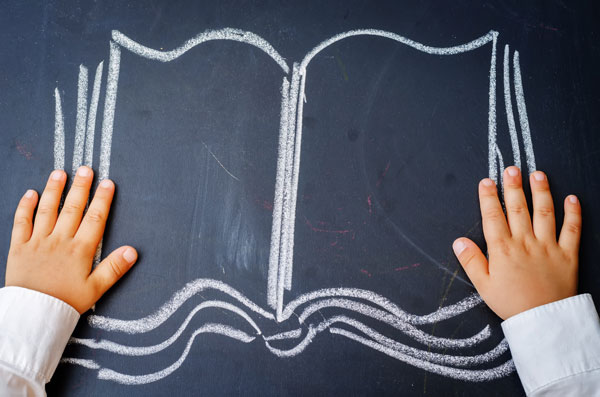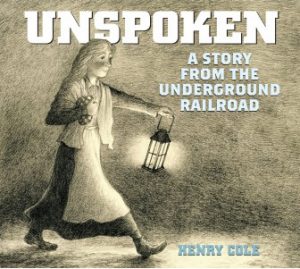Learn about the benefits of constructing a multi-year internship from a MLIS student's perspective.

Ten Wordless Picture Books to Promote Language Development
It may seem strange that a book with no words can help a child develop language … but language is more than vocabulary. Language development is an on-going process where children grow to understand and communicate language. We all learn language by listening to and imitating others, and by exploring words and stories to make them our own.
What helps with language development? Reading books, telling stories, talking about what happens in the story, acting out the characters, singing, playing with rhyming words, and above all, having fun with language, sounds and meaning.
Wordless picture books have few or no words. The illustrations become the all-important means of carrying the story. Given that children are so graphically oriented at this stage, they become the better interpreters of the story. In fact, reading a book with illustrations rather than words is an equalizer. Given that most books have the adult as the reader and the child as the often passive listener, in the case of the story without words, the child is as able to “read” the story just as well as the adult.
My opportunity to study wordless picture books came about in 2015 with an exhibit at North York Central Library of “Silent Books,” sponsored by the International Board on Books for Young People (IBBY) Italia, IBBY Canada and the Italian Cultural Institute here in Toronto. These “silent books”, which tell a story with pictures but no text, were first gathered for migrant and local children on the island of Lampedusa, Italy. Needing a way for children of many cultures to read, IBBY Italia decided wordless picture books provided the best solution. In the same way, these books can be successfully used by newcomers to Canada, who are learning English.
Children are given the chance to giggle, to be surprised, to discuss the story, to decide what the pictures mean, to determine what they would do if they were in the story, and to imagine how they might change the ending. This is the universal joy of reading.
The following are some of my favourite wordless picture books and how to use them.
For Young Children
A Boy, a Dog, and a Frog by Mercer Mayer

A boy and a dog set off to catch a frog who outwits them. Chuckle with your toddler as the boy falls in the water once again. What are those boots he is wearing? Can you make the sound of the wet squishy boots?
Animal Rescue by Patrick George
Publisher Patrick George encourages you to become an animal rescue hero by turning a transparent acetate page. This is a stunningly successful method of pulling readers into the experience of caring for animals.
Rainstorm by Barbara Lehman
What happens when a bored boy finds a key and unlocks a door, ending up in a lighthouse? Asking “What would you do?” is a good way to draw children into any story.
Inside Outside by Lizi Boyd
This beautifully illustrated book has holes in the pages for discovering what a boy does inside, outside and throughout the seasons. For other books with holes, check out The Look Book by Tana Hoban, I Spy books by Edward Gibb, or Each Peach Pear Plum by Janet Ahlberg.
Fossil by Bill Thomson
What would it be like to be back in the days of the dinosaurs? How big are they? Would you be afraid? For dinosaur lovers everywhere, these realistic illustrations come to life. Read his other book Chalk or go to the library and get some information books on dinosaurs.
Goodnight Gorilla by Peggy Rathman
Watch the gorilla play a trick on the zookeeper by letting all the animals out. Check out Tamara Stein’s Book Nook blog from the Hanen Centre Early Language Program on how to use this book to promote literacy.
Tuesday by David Wiesner
Tuesday evening at 8:00 p.m., a turtle notices frogs on lily pads flying through the sky. This is a sure fire winner if your 6-year-old craves wacky, off-the-wall stories.
For Older Children
Unspoken: A Story from the Underground Railroad by Henry Cole

One of the amazing “effects” of a book with no words is how immersed you can get into the story and surrounding emotions. During the American Civil War, a young farm girl discovers a runaway slave hiding in the barn. She supplies food and does not tell. The slave moves safely on. We never see the slave, except for one eye. A simple story and yet your mind swirls with thoughts of courage, disbelief, bravery and “what ifs”. This book will help you get into a discussion with your older child or your classroom about slavery and Black History.
Before After by Anne-Margot Ramstein and Matthias Aregui
Settle in to follow the path of before and after. See an acorn turn into a tree, a caterpillar into a butterfly, and an octopus into ink. Explore with delight the connectedness of these engaging illustrations. No story to retell; you’ll simply want to share the whole book with older children and adults.
Mirror by Jeannie Baker
This author/illustrator is a master of time travel through illustrations. This book is divided into two. One half of the book presents mixed media collages of the everyday life of a family in Australia; the other side a family in North Africa. Children will minutely explore pages side by side to find similarities. Again the illustrations will educate so much more than the words.
Leigh Turina has been working at Toronto Public Library for over 25 years as a children’s librarian in a variety of branches, including 2 placements at Sick Kids Hospital. She is the lead librarian working with the IBBY Collection of Books for Young People with Disabilities. She can be reached at ibby[at]torontopubliclibrary.ca.


